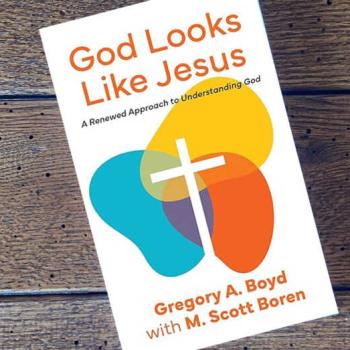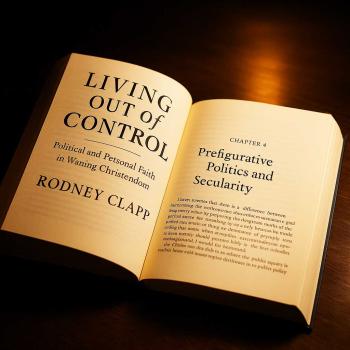A Favorite Theologian Revisited: Emil Brunner (Review of Alister McGrath’s Book: Part Two)
This is a continuation of a recent blog post about theologian Emil Brunner under the guise of being a review of Alister McGrath’s recently published Emil Brunner: A Reappraisal (Wiley Blackwell, 2014). I mean that tongue-in-cheek because I’m aware, as you may be, that my interest in McGrath’s book arises from my interest in and love for Emil Brunner’s theology and I’m more interested in promoting that than McGrath’s book! However, if you’re a fan of Brunner, like I am, you may want to spend $83 for this approximately 200 pages book. I did.
I’m reading the book slowly because I want to absorb it, reflect on it, think critically about it and let it renew and refresh my interest in and knowledge of Brunner’s theology. This second installment focuses on one crucial chapter of the book which deals with one crucial episode in Brunner’s theological career—his famous (or infamous) 1934 debate with Karl Barth about “natural theology.” This is Chapter 4: “Natural Theology? The Barth—Brunner Debate of 1934” (pp. 90-133).
For those who are not aware of this debate, I’ll review it briefly. During the 1920s Barth and Brunner were fairly friendly and working together, with Eduard Thurneysen and Friedrich Gogarten, on what came to be called “dialectical theology.” McGrath rightly notes that Barth was a little jealous that Brunner was better known in Britain and America and Brunner was a little concerned that Barth might be the stronger personality and thinker of the group. Barth went to Germany to teach; Brunner taught at the University of Zurich but lectured in many places. The two Swiss theologians knew each other well and carried on a lively correspondence. They also met many times for theological conversations—often with Thurneysen who seemed to be the one of the group who tried to hold it together. These were all big personalities with relatively large egos.
In Germany, during the late 1920s and early 1930s, Barth experienced the chaos of the Weimar Republic and the beginnings of National Socialism as a political force. Eventually, of course, to make a long story short, he spoke out against the “Nazification” of the German churches and helped form the “Confessing Church” that stood against Fascism. Barth saw what was happening in Germany as the inevitable result of German liberal religious thought—openness to new revelations of God in culture. He tended to equate this with natural theology.
Back in Switzerland, Brunner was not personally touched by happenings in Germany, at least not to the extent Barth was. Barth was involved in the controversy and eventually was expelled from Germany for refusing to swear an oath of allegiance to Hitler. Brunner did not see the events unfolding in Germany as directly related to liberal theology or natural theology.
During the 1920s, so McGrath helpfully explains, Brunner was developing his idea of a
“second task of theology” and calling it “eristics.” This was the task of a kind of Christian apologetics—setting the Christian world view over against alternatives such as naturalism and idealism and showing its superiority. Barth was opposed to this because it seemed to him to presuppose a universal rationality above revelation, the Word of God.
Barth began to criticize Brunner’s eristics (as expressed for example in The Mediator—Brunner’s first major monograph published in 1929) and he began rather stridently to criticize all natural theology as inherently idolatrous.
In The Mediator Brunner had argued for a twofold view of the imago dei—humanity’s “formal image of God” which is not lost or even damaged by the fall and humanity’s “material image of God” which is lost by the fall. The former is simply capacity for hearing and responding to the Word of God. The latter is actually responding to the Word of God resulting in having a relationship with God. Brunner made clear that the latter, the material image, could only be restored by grace.
Barth attacked Brunner’s distinction in some lectures that were published. Brunner was stung by the harshness of the criticisms and believed Barth was either misunderstanding him or misrepresenting his view.
In 1934 Brunner published Nature and Grace in which he responded to Barth’s criticisms and defended a kind of natural theology. However, as McGrath very helpfully explains, what Brunner called “natural theology” in this work (and before and after) was not what most people mean by the concept. He meant general revelation and the formal image of God as a “point of contact” for the gospel in natural man. He feared that Barth was throwing the baby of general revelation out with the bathwater of natural knowledge of God.
Barth responded to Brunner’s book with Nein! (“No!) The subtitle was “A Reply to Emil Brunner” and the reply was extremely harsh. McGrath is right to say that 1) Barth made some good points against natural theology in light of what was happening in Germany, but 2) misrepresented Brunner’s view. Brunner’s view was not very different, if at all, from Calvin’s in the Institutes and was grounded in Romans 1. Brunner went out of his way to explain that he was not defending a “natural knowledge of God” with any salvific potential. He was only defending the “point of contact” for the gospel in natural, fallen humans. But Barth represented Brunner as if he were attempting to return to the “fleshpots of Egypt”—meaning to Catholic and liberal Protestant notions of a natural knowledge of God that could potentially serve as a prison for revelation and/or a foundation for idolatry.
I was much relieved by McGrath’s chapter. I have always thought that Barth’s response was wrong and that Brunner was more right than Barth—with regard to the point of contact. Barth was over reacting to the Nazification of the German churches and simply could not see Brunner’s proposal for what it was. However, Barth fans like to think Barth won the debate. If he did, it was by cheating. (For example, as McGrath shows, Barth attributed sayings to Brunner nowhere to be found in Brunner’s work.)
I can’t help but compare Barth’s Nein! with Luther’s The Bondage of the Will—his response to Erasmus’ defense of free will. Erasmus had clearly defended what I call “freed will”—the will freed by prevenient grace to accept or reject saving grace. Luther simply ignored that and criticized a straw man—his perception (misrepresentation) of Erasmus’ view as humanistic belief in humanity’s ability to save itself.
So Barth’s Nein! attacked a straw man and not Brunner’s actual position which he later clarified in Man in Revolt and Dogmatics. But it shouldn’t have needed such clarification (even though McGrath thinks it helped).
The upshot of all this is that I find McGrath’s treatment of this sorry episode in 20th century theology very helpful. He mostly sides with Brunner—as he should. But very many theologians under the spell of Barth’s influence cannot bring themselves to admit that, at least in this case, Barth was wrong—if not about natural theology itself at least about Brunner’s view. Simply put, Barth threw the baby of general revelation out with the bathwater of natural knowledge of God. Brunner’s only error was in calling his view “natural theology.”
I believe, with Brunner, that there is a natural point of contact in the sinner that I would describe as “life’s ultimate questions” and their unanswerability by anything other than God’s Word. And I agree with Brunner that this, by itself, does no one any good with regard to salvation unless and until God’s special, prevenient grace liberates his or her mind and will to “see” that God’s Word answers. However, the point of contact can incline a person under pressure to be open to prevenient grace.












